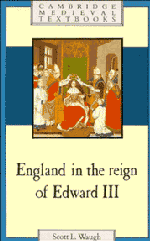Book contents
- Frontmatter
- Contents
- List of figures and tables
- Acknowledgements
- Map 1 Towns and villages mentioned in Chapters 3–6
- Map 2 Ecclesiastical sites mentioned in Chapter 9
- Part I Overview
- Part II Economic challenges
- 3 The peasant family and village society
- 4 Markets and towns
- 5 Overseas trade: wool and taxes
- 6 Economic change
- 7 The landlords' response
- Part III Government and communities
- Part IV Politics
- Glossary
- Bibliography
- Index
6 - Economic change
Published online by Cambridge University Press: 05 June 2012
- Frontmatter
- Contents
- List of figures and tables
- Acknowledgements
- Map 1 Towns and villages mentioned in Chapters 3–6
- Map 2 Ecclesiastical sites mentioned in Chapter 9
- Part I Overview
- Part II Economic challenges
- 3 The peasant family and village society
- 4 Markets and towns
- 5 Overseas trade: wool and taxes
- 6 Economic change
- 7 The landlords' response
- Part III Government and communities
- Part IV Politics
- Glossary
- Bibliography
- Index
Summary
England in 1300 was prosperous. Yet over the next seventy-five years a series of profound shocks jolted the country. Famine, deflation, inflation, and disease rocked the foundations of English life. The crises reverberated up and down the social ladder. The effects were not the same at every rung and spelled hardship for some, prosperity for others. When the period was over, changes had been set in motion that would profoundly alter England's economy and society.
The intensity of these shifts can be shown most graphically and simply by the rise and fall of grain prices, illustrated in Figure 2. Since the vast majority of the population was engaged in the production of grain, everyone felt the movements, which affected income as well as expenditure. After a steady rise during the thirteenth century, prices remained stable for over a decade from 1290. This was the peak of the medieval economy with a high population, moderate wages, and healthy trade. After 1307, however, uncertainty set in. Sharp inflation began in 1307 and lasted until 1330, reaching its highest level between 1315 and 1321. There followed an equally significant period of deflation from about 1330 to 1345. Prices fell steadily before bottoming out in 1340. By 1345 they were well on their way toward recovery and, indeed, were heading for yet another remarkable inflation that peaked in 1370. The final period began in 1370 when prices once again fell, reaching the levels of 1290–1307 in 1380.
- Type
- Chapter
- Information
- England in the Reign of Edward III , pp. 76 - 96Publisher: Cambridge University PressPrint publication year: 1991

